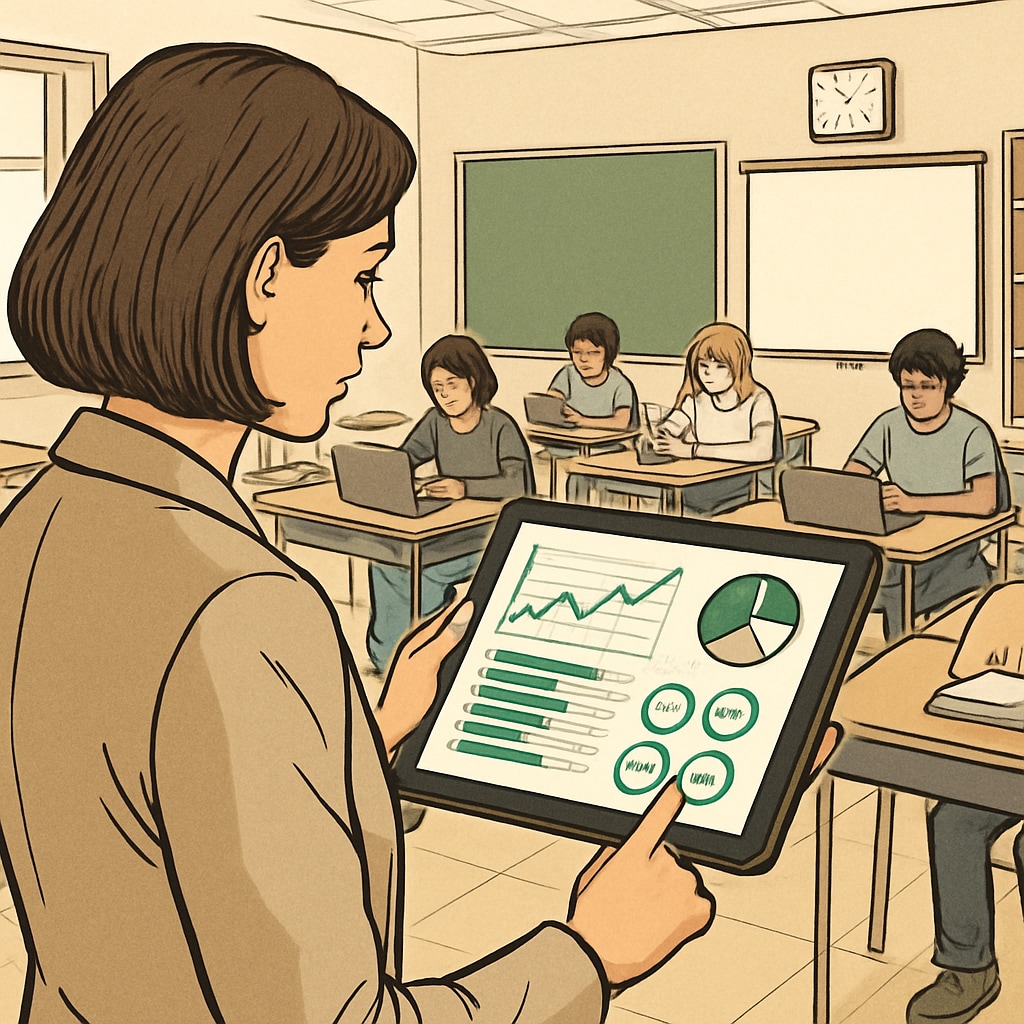Traditional grading systems have long been the cornerstone of K12 education. However, the overreliance on grades to measure “成绩评估,学习成果,实时跟踪 (performance evaluation, learning outcomes, real-time tracking)” has sparked widespread debate. Critics argue that grades often fail to capture the nuances of a student’s learning journey, focusing instead on a narrow set of metrics. This article delves into the limitations of traditional grading methods and explores innovative approaches to assessing learning in a way that promotes holistic student development.
The Shortcomings of Grades as a Sole Metric
Grades, though standardized and easy to quantify, provide a limited view of a student’s abilities. They primarily measure academic performance in snapshots, often through high-stakes testing. This approach neglects essential skills such as critical thinking, creativity, collaboration, and emotional intelligence. Moreover, grades can inadvertently foster unhealthy competition and anxiety among students, shifting the focus from learning to performance.
For example, a student excelling in teamwork or problem-solving may not see these strengths reflected in their report card. In addition, grades are often final, offering little room for iterative learning or growth. As a result, students may view mistakes as failures rather than opportunities to improve.

Alternative Approaches to Learning Assessment
To address these deficiencies, educators and policymakers are exploring alternative assessment methods that prioritize holistic development. Here are a few promising approaches:
- Portfolio-Based Assessment: Students compile a portfolio of their work over time, showcasing their progress, creativity, and problem-solving skills.
- Competency-Based Learning: This method evaluates students on their ability to master specific skills or concepts rather than their performance on standardized tests.
- Peer and Self-Assessment: Encouraging students to evaluate their own work or that of their peers fosters self-awareness and critical thinking.
- Real-Time Feedback Systems: Technology-driven tools enable teachers to provide immediate feedback, allowing students to adjust and improve continuously.
These methods not only offer a more comprehensive view of a student’s abilities but also align with the ultimate goal of education: to prepare students for life beyond the classroom.
Integrating Real-Time Tracking into Education
Real-time tracking of learning outcomes has emerged as a transformative tool in modern education. By leveraging technology, educators can monitor a student’s progress on an ongoing basis, identifying strengths and areas for improvement in real-time. This proactive approach ensures that interventions can be made promptly, preventing students from falling behind.
For instance, learning management systems (LMS) and educational apps now incorporate analytics to track student engagement, comprehension, and performance. These platforms generate detailed reports, enabling teachers and parents to make data-driven decisions. As a result, the focus shifts from punitive measures to supportive strategies, fostering a growth-oriented learning environment.

Balancing Quantitative and Qualitative Metrics
While technology offers exciting possibilities, it is crucial to balance quantitative data with qualitative insights. Numbers alone cannot capture the full scope of a student’s learning journey. Incorporating teacher observations, student reflections, and even parental input can provide a richer, more nuanced understanding of a student’s development.
Moreover, educators must ensure that these new methods are inclusive and equitable. Tools and metrics should be accessible to all students, regardless of socioeconomic background, to avoid perpetuating existing disparities in education.
Conclusion: A Call for Holistic Education Reform
Moving beyond grades to a more nuanced, holistic approach to “成绩评估,学习成果,实时跟踪 (performance evaluation, learning outcomes, real-time tracking)” is essential for the future of K12 education. By embracing alternative assessment methods and leveraging real-time tracking technologies, we can create a system that values growth, creativity, and critical thinking alongside academic achievement.
As educators, parents, and policymakers, we have a collective responsibility to ensure that our assessment systems align with the broader purpose of education: preparing students to thrive in an ever-changing world. It’s time to rethink what success looks like in the classroom.
Readability guidance: This article uses short paragraphs, clear subheadings, and a mix of examples and lists to enhance readability. Key points are reiterated using transitions for clarity, and the balance between active and passive voice ensures an engaging narrative.


